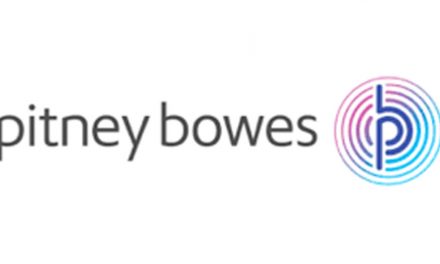
Mail offers marketing “edge” in world of spam filters, says Pitney Bowes
The average adult is being bombarded by between 600 and 3,000 promotional messages every day – but marketers are increasingly finding their targets proficient at filtering out such material. That’s the view from Pitney Bowes, the mail communications giant, which has issued a white paper this week suggesting that direct mail provides the answer to businesses looking to connect with consumers who are now expert at using spam filters, do-not-call lists and unsubscribe buttons.
There might be many more channels through which marketers can try to reach consumers these days, but Pitney Bowes said the complexity involved, and informational overload for consumers, has actually made it harder for them to engage with customers.
In comparison, the firm argued that direct mail has remained one of the most trusted channels in the United States among consumers, with 81% of consumers reading or scanning their direct mail.
Citing Direct Marketing Association figures, the paper says direct mail response rates averaged 3.4% in 2012, compared to 0.12% for email.
Although there are challenges for users of direct mail, including the difficulty in predicting when mailings will arrive in the United States, Pitney Bowes said in its white paper that it was incorrect to assume only older consumers paid attention to their mail, with research from Nielson suggesting 92% of millennials are most influenced by direct mail.
Increasing ROI
In the paper, Connecticut-based Pitney Bowes offers five ways to increase return on investment through direct mail campaigns”
- Have mail presorted in order to access greater postage discounts from the US Postal Service – either in-house or via mail service providers.
- Personalise messages – new print technologies make it easier to use databases to tailor messages directly to individual named recipients, and even connect through to personalised online content via mobile phone barcodes, improving response rates.
- Enter mail closer to its destination to access better postage discounts and ensure faster delivery.
- Use colour printing to increase mail’s visual impact – consumers are 70% more likely to open a piece of mail that has colour text and graphics on the front, says Pitney Bowes.
- Use tracking systems to monitor mailings and see when customers respond to campaigns.
Pitney Bowes Presort Services senior vice president Jim Perkins said innovations and new technologies in presort and mail logistics now meant mailers could rely on the Standard Mail service for greater accuracy, tracking and predictable delivery dates in their direct mail campaign.
“These ‘new standards’ for Standard Mail can help increase the efficiency and effectiveness of customer communications, and offer cost saving opportunities,” said Perkins.
Data brokers investigation
Some of the ability of direct mail to be personalised and targeted to individual consumers could be tested by a new Federal Trade Commission investigation in the United States.
The FTC is looking into how “data brokers” harvest personal information about consumers from public and non-public sources before selling the data on to marketers.
The Commission suggested that “in many ways” the use of such data had benefits for consumers and the economy, helping prevent fraud and enable companies to better target their marketing.
But the FTC is also looking at privacy implications and the ability of consumers to access their own personal details and update their information.
The Direct Marketing Association said this week that it was confident the FTC probe would highlight the “responsible” use of consumer information by data-driven marketers as well as the “significant benefits” it offers consumers.
Jerry Cerasale, the DMA senior vice president of government affairs, suggested the massive growth of ecommerce in the US was “strong evidence” that consumers like the results of data-driven marketing and the information, discounts and offers being provided.
“Data-driven marketing fosters competition online by ensuring that large and small actors have the ability to reach consumers across the Internet. This, in turn, gives consumers greater opportunities to find the goods and services they desire at prices they can afford,” said Cerasale. “The FTC’s inquiry will certainly bring to light these and other important benefits that responsible data-driven marketing provides to consumers — and to the American economy as a whole.”













